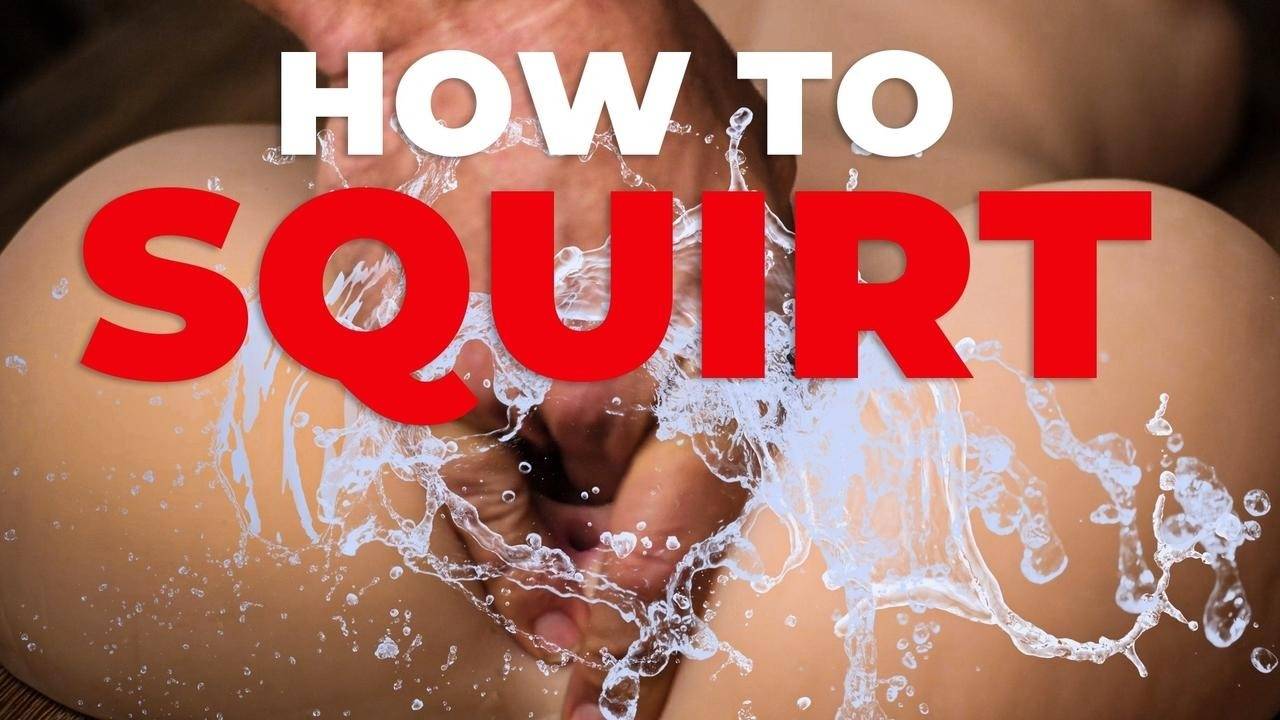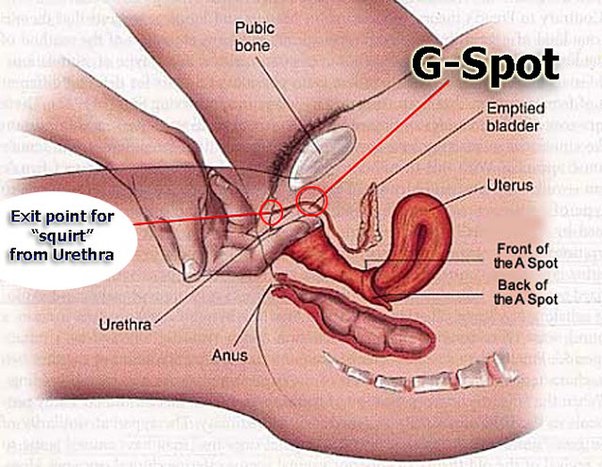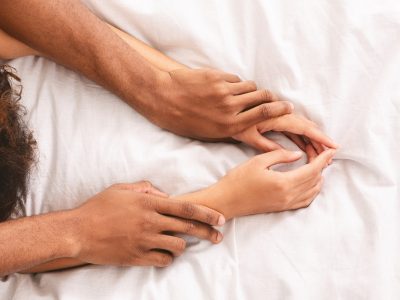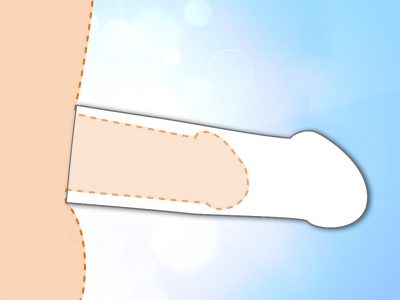We’re about to get into a hotly debated sex topic: how to squirt during sex. This topic of “squirting,” which is more properly recognized in the scientific community as “feminine ejection,” is still one of the most hotly disputed and contentious ones in sexual health research. In 2020, we still don’t know for sure if female ejaculation is a real phenomenon, and many experts are still debating this issue.
Anything to do with female sexuality has been, and continues to be, taboo in the strongest sense of the word. This is what fuels my work as a sex therapist turned neuroscientist—and exactly what I explore in my Glamour column, Ask. Dr. Nan, and in my new book, Why Good Sex Matters. The truth is we probably know just as much (if not more) about the composition of the fluids that flowed on the surface of Mars billions of years ago than we do about the nature of what is expelled by the human female during sex. How is that possible, given that references to female ejaculation date back to fourth-century Taoist texts?
In the strictest sense, anything having to do with a woman’s sexuality has been and is still considered taboo. In my Glamour column, Ask. Dr. Nan, and my new book, Why Good Sex Matters, I explain how my work as a sex therapist-turned-neuroscientist is fueled by this idea. The truth is that we probably know just as much (if not more) about the composition of the fluids that flowed on Mars billions of years ago as we do about the nature of what is discharged by the human female after intercourse. Considering the fact that Taoist books from the fourth century contain references to female ejaculation, how is this even possible?

What is squirting?
To be clear, ejaculation (a.k.a. squirting during sex) is distinct from lubrication. While the urethra—the tube that takes pee from the bladder out of the body—is used to release ejaculate, the walls of the vagina secrete lubrication, a slippery material, while you’re aroused.
The Skene’s glands (also known as the female prostate, paraurethral glands, or urethral sponge), uric acid, and urea have all been linked to the fluid. Sheri Winston, author of Women’s Anatomy of Arousal: Secret Maps to Buried Pleasure, says that as arousal rises, the erectile chambers swell out like a cluster of grapes packed with fluid. What is the source of the fluid? Our blood plasma is filtered out of the watery portion and combined with secretions similar in composition to those of the male prostate to produce female ejaculate. If you’ve ever wondered how women produce breast milk, you’re not alone—the process involves removing fluids from blood and filtering them via the kidneys.
Squirting is a controversial topic due to a dearth of research into the subject. More than one tablespoon of ejaculate may still be urine, according to some experts, but there aren’t enough research out there to be sure. On the basis of what we know so far about the architecture of the urethral sponge, I believe women’s ability to squirt bigger volumes of fluid (not urine) while ejaculating will be proven scientifically.

Why do you squirt?
In a nutshell, when fluids accumulate in the urethral sponge’s erectile tissue, they must be expelled. The urethra is said to be cleaned during and after sex, according to some theories, as a result of the fluid being expelled during sex.
1. Get your bed ready…just in case.
In the event that you succeed, things could become a little messy. To avoid oversaturating sheets, Dr. Castellanos advises adopting precautions.
Liberator Fascinator Throw by Taylor Sparks, sensual educator and proprietor of OrganicLoven.com, absorbs liquids and is softer than most towels.
2. Make sure you’re well hydrated.
It’s true that no research has been done on this, but experts agree that in theory, it could be beneficial. In O’Reilly’s opinion, “some people claim that hydration facilitates sexual response including orgasm and squirting, although this is anecdotal.” “As a whole, staying hydrated is beneficial to your health, and this includes your sexual wellness.” This is something to think about as well: according to Laino, a lack of fluids “may lead to more difficulties in reaching an orgasm in general and can even make sexual activity uncomfortable”
Embed-name has imported this content. At their website, you may be able to access the same content in a different format or extra information.
3. Give yourself plenty of time to get turned on.
Be kind to your body and yourself. According to Antonia Hall, psychotherapist and author of The Ultimate Guide to a Multi-Orgasmic Life, “it can take some time to gain a feel for it.”
Other thoughts that may be causing you tension should also be reduced. A common misconception among males is that sex begins in the bedroom, but that isn’t always the case. When it comes to seducing someone’s mind, start early in the day. This includes everything from having a sexy conversation to making sure your bedroom is free of any stressors you might be experiencing there..
4. Start by focusing on the clit.
In order to bring blood to the area and prepare the G-spot for play, focus first on stimulating your clitoris.
Using a rabbit vibe like the We-Vibe Nova, which “provides dual vibrating stimulation for the G-zone internally and the clitoral head and hood outwardly,” is recommended by O’Reilly. Additionally, she explains, the rocker is “adjustable, strong,” “rumbley,” and “pulsing.”
Additionally, the Womanizer Duo may be used as a “adventure toy” because of its “pleasure-air technology that uses tiny bursts of air to create a suction-like sensation over the clitoral head,” O’Reilly claims.
5. Then, place a lot of pressure on the G-spot.
G-spot is a little ridged place on the front of your vaginal wall that can be rubbed with your middle and ring fingers when you’re turned on, according to Hall.
It’s a marathon, not a sprint, so you’ll have to keep going for a long time. Dr. Castellanos notes that “what [you’re] pulling on is actually erectile tissue that surrounds the urethra.” Changing the angle of the urinary urethra to the bladder by stroking it will make it much easier for the fluid to be released. Relax the pelvic floor muscles while stimulating the G-spot to increase your chances of squirting.
6. Get some help from a toy.
G-spot stimulation is crucial in this case. Sparks estimates the G-spot to be two inches deep and one inch high within the vagina. What you need is something with some length and an upwards curvature, right? Her favorite wand is the Le Wand Bow: “This stainless steel wand features a circular bulb on one end and a more pointed bulb on the other end.” Allowing it to sit in warm or cold water for a few minutes prior to usage can allow you to incorporate temperature play.
7. Don’t stress about peeing.
When they’re getting near to an O, a lot of women get the urge to pee. The Skene glands behind the G-spot (aka squirting) are a common source of the “gotta-go” feeling, according to Hall.
Vanessa Marin, a sex therapist and the author of Finishing School, suggests that even if you pee, don’t worry. “Who cares if it was urine? Sex is dirty and involves a lot of fluids already, so who cares?” (However, if it helps, you can use the restroom before to starting if it makes you feel better.)
8. Control your pelvic floor muscles
According to Sparks, being able to control your pelvic muscles is beneficial. Pelvic floor muscles should be activated as soon as the “feeling [or] pressure” begins to grow, she explains. Instead of tightening, “push out…as if you were urinating. “It’s achievable, but it requires practice.”
9. Try to relax in the moment.
Being as easy-breezy and lemon-squeezy as possible when you sense an orgasm coming on will help you get where you want to go. According to O’Reilly, some persons claim that tenseness interferes with both the orgasmic experience and squirting when they tense.
For many people, Dr. Laino agrees, the squirter sensation can be enhanced by putting one’s weight down. Orgasm in general can benefit from this: “Letting your body relax, but also having some tension and contracting the pelvic floor muscles will aid in having all forms of orgasms.”
10. Don’t be too hard on yourself if it doesn’t pan out.
Dr. Castellanos advises, “Be kind to yourself if you don’t squirt,” as the final piece of advice.
Your body will naturally try to prevent anything from coming out of the urethra while you’re working, so you may not succeed the first time or even after several efforts. If something happens, let yourself appreciate the feelings and let them go.
What does it feel like?
That’s like asking how an orgasm or sex feels like: Answers will vary from person to person.
In the words of Engle, “Some people swear it feels nothing like an orgasm. However, other people claim that it feels like an orgasm, but in a slightly different way.
What a rush.” Like a sudden burst of joy. I orgasm and then squirt if my hubby continues to rub my G-spot. The 42-year-old Abby K. replies, “It’s not at all like that for me.”
Engle explains that because of the strain on the urethra, some people feel compelled to pee just before squirting.
So it is with 29-year-old Joannie N. “It’s like I’m going to wet the bed right before it happens.” “It’s like a tremendously wet orgasm while it’s happening,” she says.
Squirting can be quite gender-affirming for some trans and non-binary people. “Squirting seems to me like imagining what jizzing would feel like if I had a penis,” says Hunter C., a 23-year-old transgender man.

Can everyone do it?
McDevitt notes, “This is a tremendously contested subject.”
Why? For one thing, there have been inconsistent results from squirting research, which is understandable given how understudied the bodies of people with sexuality are in general.
As far as Engle is concerned, it appears that everybody with a vulva has the necessary “mechanics” to squirt.
It’s important to keep in mind, however, that not everyone with a vulva can, wants to, or does this. Somewhere between 10% and 50% of people with vulvas are thought to have it.
In McDevitt’s view, the ability to squirt is not superior than the inability to squirt in any way.
What are the basics?
G-spot stimulation or G-spot stimulation mixed with clitoral stimulation is the most common form of squirting.
Before you begin cleaning, make sure your surrounds are ready for it. Put down a couple towels or a water-resistant blanket on the bed. Waterproof throws can be purchased online.
You may also do this in the tub.
“I don’t have to worry about making everything wet when I masturbate and plan to stimulate my G-spot,” explains 31-year-old Christine B. That’s logical!
How much fluid you expel varies person to person. Some folks release a teaspoon amount. Others gush. Might as well prep for a super-soaker.
Next, you’ll want to set the tone.
Set the mood by lighting candles, playing PartyNextDoor (or whatever is on your Sexy Time playlist), turning off your phone, and putting the lubricant and toys within reach.
It’s time to show your G-spot and clit some affection when you’re in the mood for it.
The bottom line
A study by Zagone found that most couples who experiment with squirting report an improvement in intimacy. As a result, this is absolutely something worth investigating. In light of the foregoing, keep in mind that, while squirting can be a lot of fun, it may not be possible for everyone. This is absolutely OK.
Instead of setting objectives in sex, we should all aim to experience the whole range of pleasure that is possible. Try new things with your body and have a good time. It’s fantastic if you squirt. It doesn’t matter if you do or don’t!



















